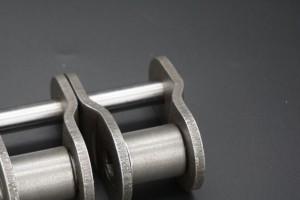1. Clean with vinegar
1. Add 1 cup (240 ml) white vinegar to the bowl
White vinegar is a natural cleaner that is slightly acidic but will not cause harm to the necklace. Pour some into a bowl or shallow dish large enough to hold your necklace.
You can find white vinegar at most household or grocery stores.
Vinegar will not harm jewelry, but it may harm any precious metal or gemstone.
Vinegar is great for removing rust, but not as effective when it’s tarnished.
2. Completely immerse the necklace in vinegar
Make sure all parts of the necklace are under the vinegar, especially the rusted areas. If needed, add more vinegar so the necklace is completely covered.
3. Let your necklace sit for about 8 hours
The vinegar will take time to remove rust from the necklace. Place the bowl somewhere where it won’t be disturbed overnight and check on it in the morning.
Warning: Do not place the bowl directly in the sun or it will heat the vinegar.
4. Wipe off rust with a toothbrush
Remove your necklace from the vinegar and place it on a towel. Use a toothbrush to gently scrub the rust off the necklace until it’s clean again. If your necklace has a lot of rust on it, you can let it soak for another 1 to 2 seconds
Hours.
The toothbrush has soft bristles that won’t scratch your necklace.
5. Rinse your necklace in cold water
Make sure all the vinegar is gone so it doesn’t ruin parts of the necklace. Concentrate the water on any particularly rusty areas to clean them.
Cold water is gentler on your jewelry than warm water.
6. Pat the necklace dry with a clean cloth.
Please make sure your necklace is completely dry before wearing it or storing it again. If your necklace gets wet, it may rust again. Use a clean cloth to avoid scratching the jewelry.
2. Use dishwashing liquid
1. Mix 2 drops of dish soap with 1 cup (240 ml) of warm water
Use a small bowl to mix warm water from the sink with some mild dish soap. If possible, try to use unscented, dye-free dish soap to protect the surface of the necklace.
Tip: Dish soap is gentle on jewelry and will not cause chemical reactions. It works best on necklaces that aren’t super tarnished or those that are metal plated rather than all metal.
2. Use your fingers to rub the necklace in soap and water.
Submerge your necklaces and chains in the water and make sure they are completely submerged. Gently wipe the surface of the pendant and chain to remove rust or rust.
Using your fingers more gently than a cloth or sponge can scratch delicate jewelry.
3. Rinse the necklace with warm water
Make sure there is no soap residue on the necklace to avoid leaving any dark spots. Use warm water to remove any additional tarnished areas.
Dry cleaning soap can discolor your necklace and make it look uneven.
4. Pat the necklace dry with a clean cloth.
Before use, make sure your cloth is completely free of dust and debris. Gently pat your necklace to make sure it is completely dry before putting it away.
Storing your necklace in moisture can cause more rust or tarnishing.
If your necklace is silver, apply some silver polish to its surface to maintain its shine.
3. Mix baking soda and salt
1. Line a small bowl with aluminum foil
Keep the shiny side of the foil facing up. Choose a bowl that can hold approximately 1 degree C (240 ml) of liquid.
The aluminum foil creates an electrolytic reaction that removes tarnish and rust without damaging the necklace metal.
2. Mix 1 tablespoon (14 grams) baking soda and 1 tablespoon (14 grams) table salt with warm water
Heat 1 degree C (240 ml) warm water in the microwave until it is hot but not boiling. Pour the water into a bowl with foil and stir in the baking soda and table salt until completely dissolved.
Baking soda is a mildly caustic natural cleaner. It removes tarnish from gold and silver, as well as rust from steel or jewelry.
3. Dip the necklace into the mixture and make sure it touches the foil
Be careful when placing the necklace in the bowl as the water is still hot. Make sure the necklace touches the bottom of the bowl so that it is in contact with the foil.
4. Let the necklace rest for 2 to 10 minutes
Depending on how tarnished or rusty your necklace is, you may need to let it sit for a full 10 minutes. You may notice some small bubbles on the necklace, this is just the chemical reaction removing the rust.
If your necklace is not rusty, you can remove it after 2 or 3 minutes.
5. Rinse your necklace in cold water
Use pliers to remove the necklace from the hot water and clean it under cold water in the sink. Make sure there are no salt or baking soda residues so they don’t stay on your necklace for long.
Tip: Pour the baking soda and salt solution down the drain to discard.
6. Pat the necklace dry with a clean cloth.
Place the necklace on a flat cloth, fold it gently, and allow the necklace to pat dry. Allow the necklace to dry for 1 hour before storing again to prevent rust, or wear the necklace immediately and enjoy its new shiny look.
Rust can form on necklaces when they are left in humid or humid conditions.
Post time: Sep-18-2023

